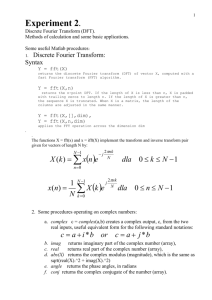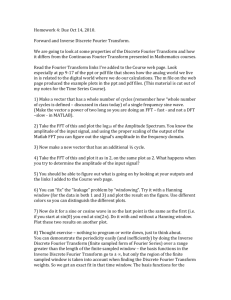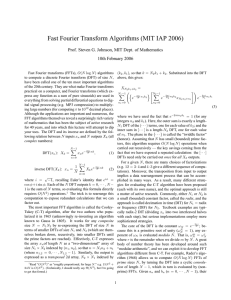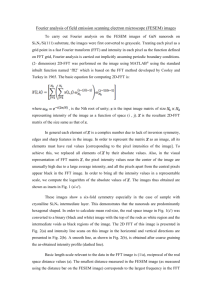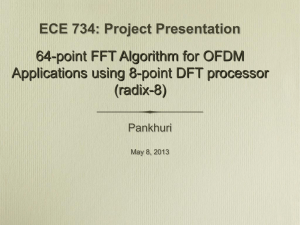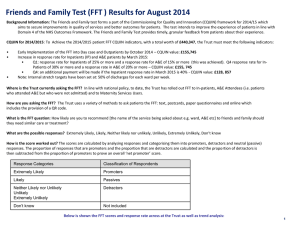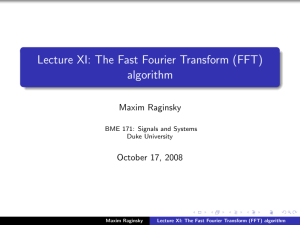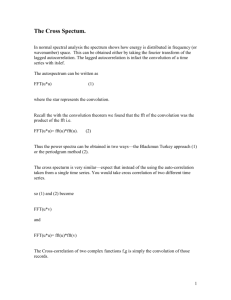Signal Processing & FFT with MATLAB: Tutorial & Examples
advertisement
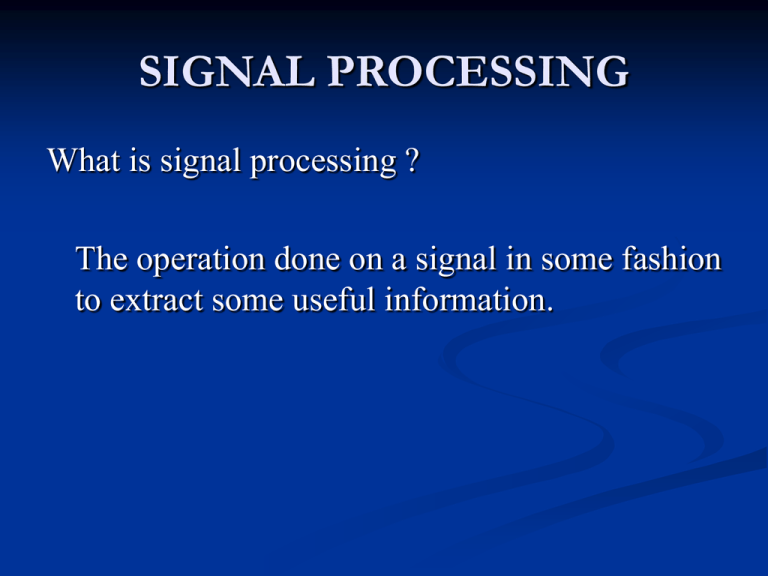
SIGNAL PROCESSING
What is signal processing ?
The operation done on a signal in some fashion
to extract some useful information.
FFT USING MATLAB
What is FFT?
A fast Fourier transform (FFT) is an
efficient algorithm to compute the
discrete Fourier transform (DFT) and
its inverse.
DFT
What is DFT?
It is a kind of Fourier transform
which transforms one function into
another.
DFT requires an input function that is
discrete and whose non-zero values
have a limited (finite) duration.
fft - Discrete Fourier transform
Syntax
Y = fft(X)
Y = fft(X,n)
Y = fft(X,[],dim)
Y = fft(X,n,dim)
Y = fft(X)
Y = fft(X) returns the discrete Fourier
transform (DFT) of vector X,
computed with a fast Fourier
transform (FFT) algorithm.
Y=fft(X,n)
Y = fft(X,n) returns the n-point DFT.
If the length of X is less than n, X is
padded with trailing zeros to length
n. If the length of X is greater than n,
the sequence X is truncated. When X
is a matrix, the length of the columns
are adjusted in the same manner.
Y = fft(X,[],dim)
Y = fft(X,[],dim) and Y = fft(X,n,dim)
applies the FFT operation across the
dimension dim.
EXAMPLES
A common use of Fourier transforms
is to find the frequency components
of a signal buried in a noisy time
domain signal
Consider data sampled at 1000 Hz.
Form a signal containing a 50 Hz
sinusoid of amplitude 0.7 and 120 Hz
sinusoid of amplitude 1 and corrupt it
with some zero-mean random noise
PROGRAM
Fs = 1000;
T = 1/Fs;
L = 1000;
t = (0:L-1)*T;
x = 0.7*sin(2*pi*50*t) + sin(2*pi*120*t);
y = x + 2*randn(size(t));
plot (Fs*t(1:50),y(1:50))
title ('Signal Corrupted with Zero-Mean Random
Noise')
xlabel ('time (milliseconds)')
It is difficult to identify the frequency
components by looking at the
original signal. Converting to the
frequency domain, the discrete
Fourier transform of the noisy signal
y is found by taking the fast Fourier
transform (FFT):
Program
NFFT = 2^nextpow2(L);
Y = fft(y,NFFT)/L;
f = Fs/2*linspace(0,1,NFFT/2+1);
% Plot single-sided amplitude spectrum.
plot(f,2*abs(Y(1:NFFT/2+1)))
title ('Single-Sided Amplitude Spectrum of y(t)')
xlabel ('Frequency (Hz)')
ylabel('|Y(f)|')
The main reason the amplitudes are not exactly
at 0.7 and 1 is because of the noise. Several
executions
of
this
code
(including
recomputation of y) will produce different
approximations to 0.7 and 1. The other reason
is that you have a finite length signal.
Increasing L from 1000 to 10000 in the
example above will produce much better
approximations on average.
CONVOLUTION
Syntax
w = conv(u,v)
w = conv(u,v) convolves vectors u and v.
Algebraically, convolution is the same
operation as multiplying the polynomials
whose coefficients are the elements of u
and v.
C = conv(...,'shape')
C = conv(...,'shape') returns a subsection of the
convolution, as specified by the shape parameter:
full returns the full convolution (default).
same returns the central part of the convolution of the
same size as A.
valid Returns only those parts of the convolution that are
computed without the zero-padded edges.
enter the 1st sequence [1,2,3,4,5,6]
enter the 2st sequence [2,5,3,4,6,7]
the resultant signal is
y=2
42
9 19 33 53 80 93 83 82
71

